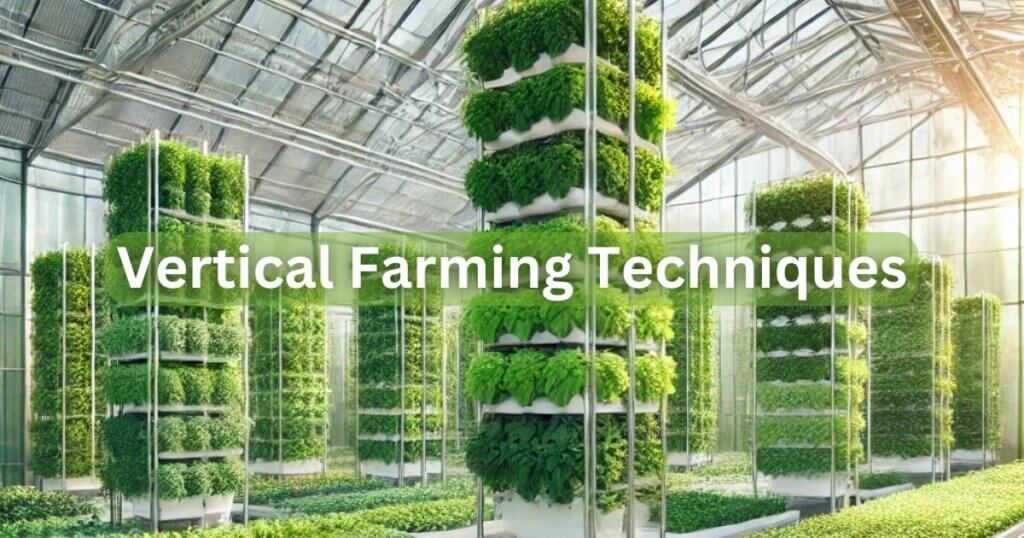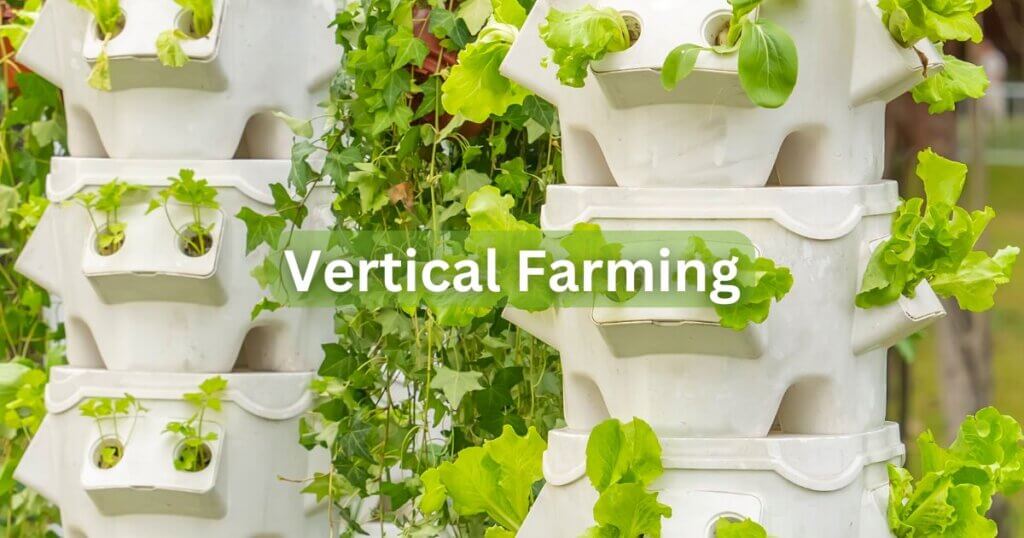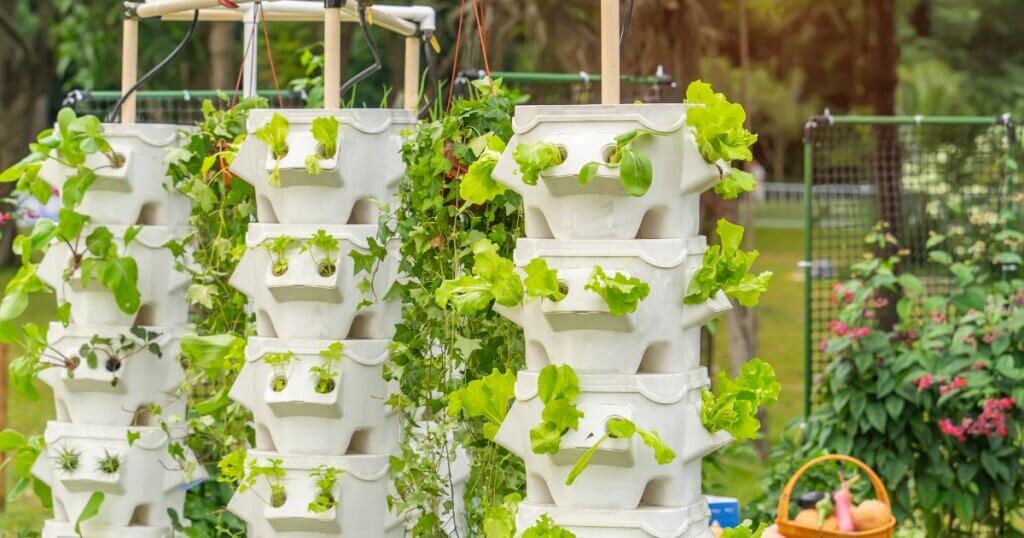Mastering Vertical Farming Techniques: Unlock Explosive Growth and Revolutionize Your Harvest

Some of the links in this post are affiliate links. As an Amazon Associate, we earn a referral fee from qualifying purchases—at no extra cost to you.
Unlocking the Secrets to Successful Vertical Farming
Vertical farming is revolutionizing how we grow crops by utilizing innovative techniques to maximize space and yield. This sustainable farming method holds great promise for meeting the ever-increasing demand for food in a world with limited agricultural land. In this comprehensive guide, we will explore the intricacies of vertical farming techniques, from choosing the right structures and lighting systems to optimizing nutrient delivery and pest control. Whether you’re a seasoned farmer or an aspiring enthusiast, this article will equip you with the knowledge to master vertical farming and reap the rewards of this cutting-edge approach.
Table of Contents
Why Vertical Farming?
Sustainable and Efficient Food Production
Traditional farming methods face limitations due to a growing global population and diminishing arable land. Vertical farming presents a sustainable solution by allowing crops to be cultivated in vertical layers, utilizing minimal land area. Farmers can grow more produce in a smaller footprint by stacking crops vertically, efficiently using space and reducing the need for expansive agricultural land.
Year-Round Crop Production
Traditional farming is subject to the constraints of seasons and weather conditions. Vertical farming, on the other hand, enables year-round crop production by creating controlled environments. This means that regardless of external factors, such as extreme temperatures or seasonal variations, vertical farms can provide a consistent supply of fresh produce throughout the year, meeting the demands of consumers regardless of the season.
Reduced Dependency on Pesticides and Herbicides
Vertical farming techniques also offer the advantage of enhanced pest and disease control. The risk of pests and diseases affecting crops is significantly reduced in a controlled environment. This allows farmers to minimize or eliminate harmful pesticides and herbicides, resulting in safer and more environmentally friendly food production.
Choosing the Right Structure for Vertical Farming
1. Assessing Available Space and Layout
Before embarking on your vertical farming journey, evaluating the available space and planning the layout is crucial. Consider the height, width, and depth of the area where you intend to set up your vertical farm. This assessment will determine the type of structures you can use and the maximum number of vertical growing layers you can accommodate.
2. Selecting Vertical Farming Structures
Vertical farming structures come in various forms, such as racks, shelves, towers, or even repurposed shipping containers. Each structure has its unique benefits and considerations. Racks and shelves suit smaller-scale operations, while repurposed shipping containers offer portability and flexibility. Towers, on the other hand, maximize space utilization by stacking plants vertically. Choose a structure that suits your space, scalability, and crop requirements.
The Mr. Stacky 5-Tier Vertical Planter is ideal for small-scale vertical farms, offering a compact and stackable design that maximizes space and simplifies crop management.
3. Ensuring Proper Ventilation and Air Circulation
Good air circulation is crucial for healthy plant growth and for preventing moisture and mould buildup. When selecting or designing your vertical farming structure, ensure it allows for proper ventilation. Incorporate fans or air circulation systems to maintain consistent airflow throughout the growing area. Adequate ventilation promotes healthy plants and helps regulate temperature and humidity levels.
The AC Infinity CLOUDLINE T6 Inline Fan provides quiet, powerful airflow and built-in climate control, perfect for maintaining airflow and humidity in enclosed vertical farms.
4. Optimizing Lighting Systems
Since vertical farms often operate indoors or in controlled environments, artificial lighting is essential for photosynthesis and plant growth. LED grow lights are widely favoured in vertical farming due to their energy efficiency and customizable spectral output. Determine your crops’ appropriate lighting intensity and duration, considering their specific light requirements at different growth stages.
The VIVOSUN VS2000 LED Grow Light delivers full-spectrum, energy-efficient lighting that supports all plant growth stages in vertical farming environments.
Efficient Nutrient Delivery in Vertical Farming
1. Understanding Hydroponic Systems
Hydroponics, a soilless cultivation method, is commonly used in vertical farming. It involves growing plants in nutrient-rich water solutions, allowing for the efficient delivery of essential nutrients. Several hydroponic systems suit vertical farming, including nutrient film technique (NFT), deep water culture (DWC), and aeroponics.
The Hydroponic Grow Kit – 36 Site NFT System is a beginner-friendly, space-saving hydroponic solution ideal for vertical farming setups.
2. Implementing a Nutrient Management Plan
To ensure optimal plant growth and yield, developing a nutrient management plan tailored to your specific crops is crucial. Conduct regular water and nutrient solution testing to maintain the ideal pH and nutrient levels. Adjust the nutrient solution composition based on the plant’s growth stage and specific requirements.
The Inkbird ITC-308 Digital Temperature Controller automates heating and cooling equipment, helping maintain optimal growing conditions in your vertical farm.
3. Recirculating and Reusing Nutrient Solutions
In a sustainable vertical farming system, it’s beneficial to recirculate and reuse nutrient solutions. Implement a recirculating system that allows excess nutrient solution to be collected, filtered, and reintroduced to the plants. This not only reduces waste but also minimizes resource consumption and operational costs.
4. Supplementing with Beneficial Microorganisms
Introducing beneficial microorganisms, such as mycorrhizal fungi and nitrogen-fixing bacteria, can enhance nutrient uptake and overall plant health. These microorganisms establish symbiotic relationships with plant roots, facilitating the absorption of nutrients from the growing medium. Consider incorporating organic amendments or microbial inoculants to foster a healthy root microbiome.
Achieving Optimal Environmental Conditions
1. Temperature and Humidity Control
Maintaining appropriate temperature and humidity levels is crucial for successful vertical farming. Different crops have specific temperature requirements, and deviations from the optimal range can impact growth and yield. Install heating, ventilation, and air conditioning (HVAC) systems to regulate temperature, while dehumidifiers or humidifiers can help control humidity levels.
2. CO2 Enrichment
Carbon dioxide (CO2) enrichment is a technique used to enhance photosynthesis and plant growth in enclosed environments. Increasing CO2 levels can significantly improve crop productivity in vertical farms. Monitor and control CO2 levels within the growing area, ensuring they remain within the optimal range for the cultivated crops.
3. Light Intensity and Duration
Proper lighting is crucial for healthy plant development in vertical farming. Determine the ideal light intensity and duration based on the specific crop’s light requirements at different growth stages. Adjust the lighting setup accordingly to ensure plants receive adequate illumination for photosynthesis and growth.
4. Implementing an Automated Control System
To maintain precise environmental conditions, consider implementing an automated control system. This system monitors and regulates temperature, humidity, CO2 levels, and lighting schedules. By automating these processes, you can minimize human error and ensure consistent, optimal crop conditions.
Effective Pest and Disease Management
1. Implementing Preventive Measures
Prevention is key to maintaining a pest- and disease-free vertical farm. Start by maintaining strict hygiene practices, including regular cleaning and sanitizing the growing area and equipment. Implement a strict entry protocol to prevent pests and diseases from entering the facility. Quarantine new plants before introducing them into the vertical farm to prevent the spread of pests or pathogens.
2. Biological Pest Control
Biological pest control methods offer a sustainable and eco-friendly approach to pest management in vertical farming. Introduce beneficial insects, such as ladybugs or predatory mites, that prey on pests like aphids or spider mites. Implement biological control agents to target specific pests while minimizing the use of chemical pesticides.
MAXGUARD (30 Pack) Yellow Stake Sticky Insect/Bug Traps act as natural predators to common indoor pests like aphids, offering an eco-friendly pest control solution for vertical farms.
3. Integrated Pest Management (IPM)
Adopting an integrated pest management approach involves combining various pest control methods for maximum efficacy. Monitor the growing area regularly for signs of pests or diseases. Implement cultural practices like pruning or removing infected plants to prevent the spread of diseases. Utilize chemical pesticides only as a last resort and ensure their careful application following safety guidelines.
4. Disease Management
Vertical farms are susceptible to diseases caused by fungi, bacteria, or viruses. Practice crop rotation and maintain a clean growing environment to manage diseases effectively. Remove and destroy infected plants promptly to prevent the spread of diseases. Additionally, consider using disease-resistant varieties to minimize the risk of outbreaks.
Conclusion
Vertical farming techniques offer an innovative and sustainable solution to the challenges of traditional agriculture. By mastering the intricacies of vertical farming, you can maximize crop yields, conserve resources, and provide a consistent supply of fresh produce throughout the year. Remember to choose the right structure, optimize lighting and nutrient delivery, create optimal environmental conditions, and implement effective pest and disease management strategies. With dedication and knowledge, you can unlock the full potential of vertical farming and contribute to a more sustainable future of food production.
FAQs – Vertical Farming Techniques
1. What are the energy costs associated with vertical farming?
Vertical farming relies heavily on artificial lighting, climate control, and automation, leading to significant energy consumption. While LED lights and energy-efficient HVAC systems help reduce costs, electricity expenses remain a major factor in operational budgets.
2. Can vertical farming be profitable in small-scale operations?
Yes, but profitability depends on factors like crop selection, market demand, and cost management. High-value crops such as microgreens, herbs, and specialty lettuces tend to yield better returns in small-scale vertical farms.
3. What are the best crops to grow in a vertical farm?
Leafy greens (lettuce, spinach, kale), herbs (basil, mint, cilantro), strawberries, and certain mushrooms are ideal for vertical farming due to their short growth cycles, high yield, and market demand.
4. Are there government incentives or grants for vertical farming?
Many governments and organizations offer grants, subsidies, and tax incentives for sustainable agricultural practices, including vertical farming. Availability varies by country and region, so research local agricultural development programs.
5. How does vertical farming impact food security?
By enabling local, year-round food production with minimal land use, vertical farming helps reduce dependence on imports, mitigates supply chain disruptions, and increases access to fresh produce in urban areas.
Some Useful Sites Related To Vertical Farming Techniques
- Wikipedia: Vertical Farming
This comprehensive article explores vertical farming, including its history, technologies, and various applications. - The Guardian: More yield, less field: how vertical farming is saving space, water, and emissions
This article discusses how vertical farming contributes to sustainability by reducing space, water usage, and emissions. - Food & Wine: Why Our Produce Could Soon Be Grown in Total Darkness
An exploration of electro-agriculture, a technology that allows crops to grow without sunlight, soil, or large amounts of land. - Times Union: LEDs and basil leaves: Urban farming pilot program blossoms in Glens Falls
This article highlights an urban farming initiative using hydroponics and LED lights to grow basil and other greens in a 480-square-foot space. - The Wall Street Journal: Larry Ellison’s Half-Billion-Dollar Quest to Change Farming Has Been a Bust
An analysis of Larry Ellison’s agricultural venture, Sensei Ag, and the challenges faced in implementing vertical farming technologies.







